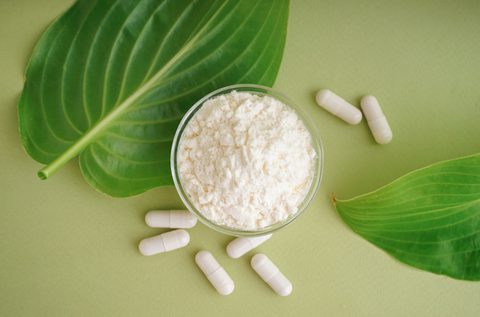

How Enzymes Enhance Collagen: A Closer Look at Functionality and Processing
Collagen is increasingly used in functional foods and beverages, valued for its potential to support joint, bone, and skin health from within. However, native collagen poses challenges in food applications due to its large molecular size, poor solubility, and resistance to digestion. To overcome these limitations, enzymatic processing is used to break collagen down through controlled hydrolysis. This produces smaller, more functional peptides that are easier to digest, highly soluble, and better suited for food and drink formulations. Enzymatic hydrolysis has become the industry standard for producing collagen peptides that meet both nutritional and technical demands in food product development.
The Limitations of Native Collagen
Native collagen consists of three polypeptide chains wound into a stable triple-helix structure, forming long, insoluble fibres. While excellent for mechanical support in tissues, this structure poses several challenges for industrial use:
- Poor solubility in water and most solvents
- Large molecular weight, limiting absorption and permeability
- Resistance to digestion and breakdown by non-specific methods
- Difficulty in formulation for clear liquids, creams, or bioactive delivery systems
To address these issues, collagen must be broken down in a controlled manner ideally without compromising its amino acid profile or biological potential.
Enzymatic Hydrolysis: Controlled Collagen Modification
Enzymatic hydrolysis involves the use of proteolytic enzymes to cleave specific peptide bonds within the collagen molecule. This process reduces the molecular weight and alters the structural characteristics of collagen, producing a more functional and versatile material.
Compared to chemical or thermal hydrolysis, enzymatic methods offer significant advantages:
- Mild reaction conditions (e.g. pH 6–8, 40–60°C) reduce degradation and preserve bioactivity
- Greater specificity leads to uniform peptide profiles
- Improved reproducibility and scalability for industrial applications
- Lower environmental impact due to reduced energy and chemical requirements
Functional Improvements via Enzymatic Processing
Enzymatically hydrolysed collagen (also referred to as collagen peptides) exhibits several enhanced properties over its native form:
1. Improved Solubility - Hydrolysis reduces collagen’s molecular weight and exposes hydrophilic groups, improving its solubility in cold water essential for drinkable supplements, cosmetics, and injectables.
2. Enhanced Bioavailability - Smaller peptides are absorbed more efficiently in the gastrointestinal tract, increasing their potential to stimulate endogenous collagen production in skin, cartilage, and bone.
3. Customised Peptide Profiles - By selecting specific enzymes and hydrolysis conditions, manufacturers can produce peptides with targeted bioactivity, e.g. di- and tripeptides rich in glycine, proline, and hydroxyproline associated with skin or joint health.
4. Controlled Rheological Properties - Enzymatic processing allows for tuning viscosity and gel strength, which is valuable in biomedical scaffolds and food texturising applications.
5. Improved Compatibility with Other Ingredients - The hydrolysed form integrates more easily with emulsions, aqueous solutions, and complex formulations without phase separation or precipitation.


Why Enzymes Are Critical in Collagen Processing
Enzymes are essential for transforming collagen into forms that are both biologically active and industrially practical. They enable precise control over the breakdown of collagen, resulting in peptides that are easier to absorb, easier to formulate, and more functionally effective.
In a market increasingly focused on bioavailability, sustainability, and clean processing, enzymatic hydrolysis stands out as the most advanced and adaptable approach to collagen modification.